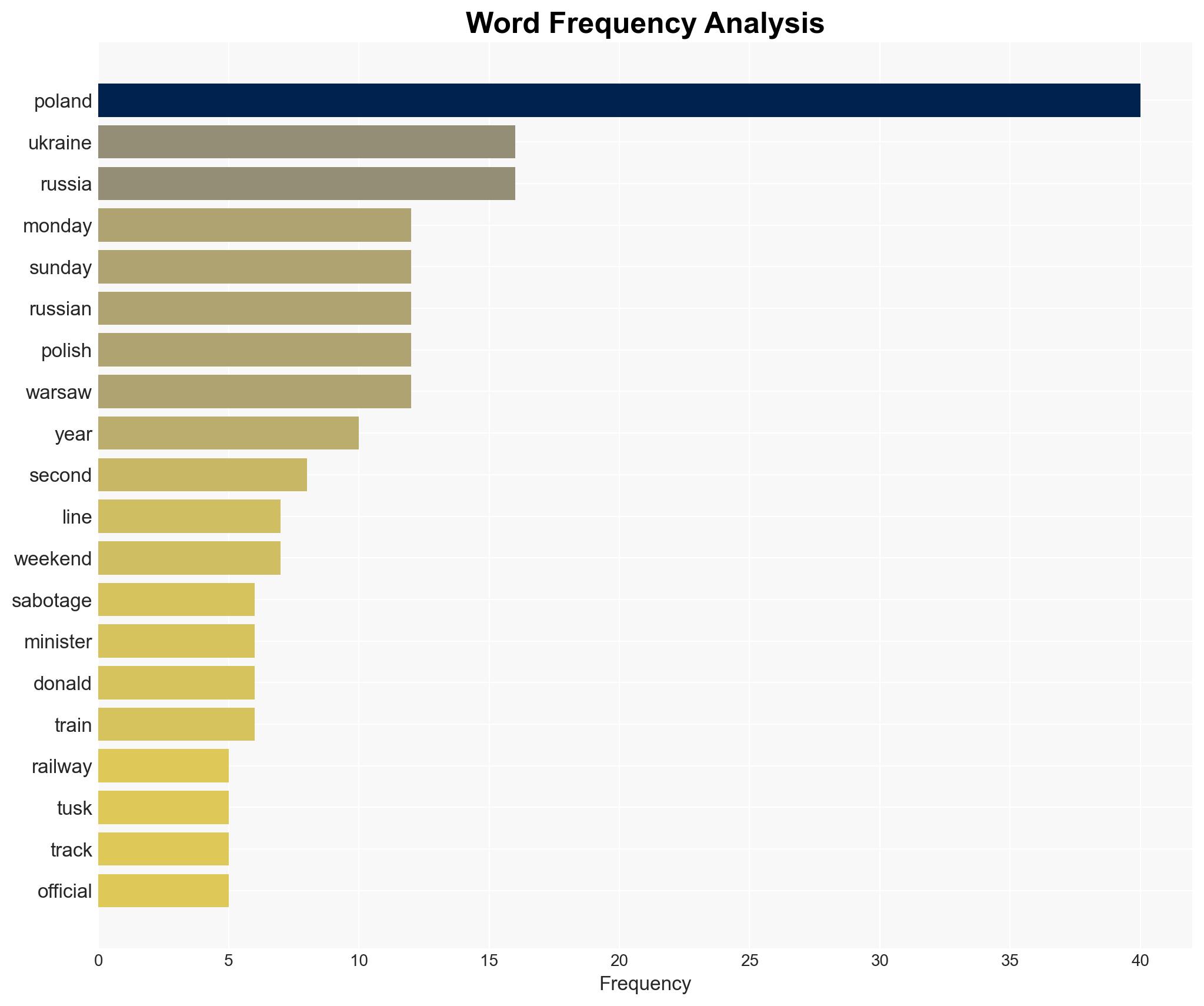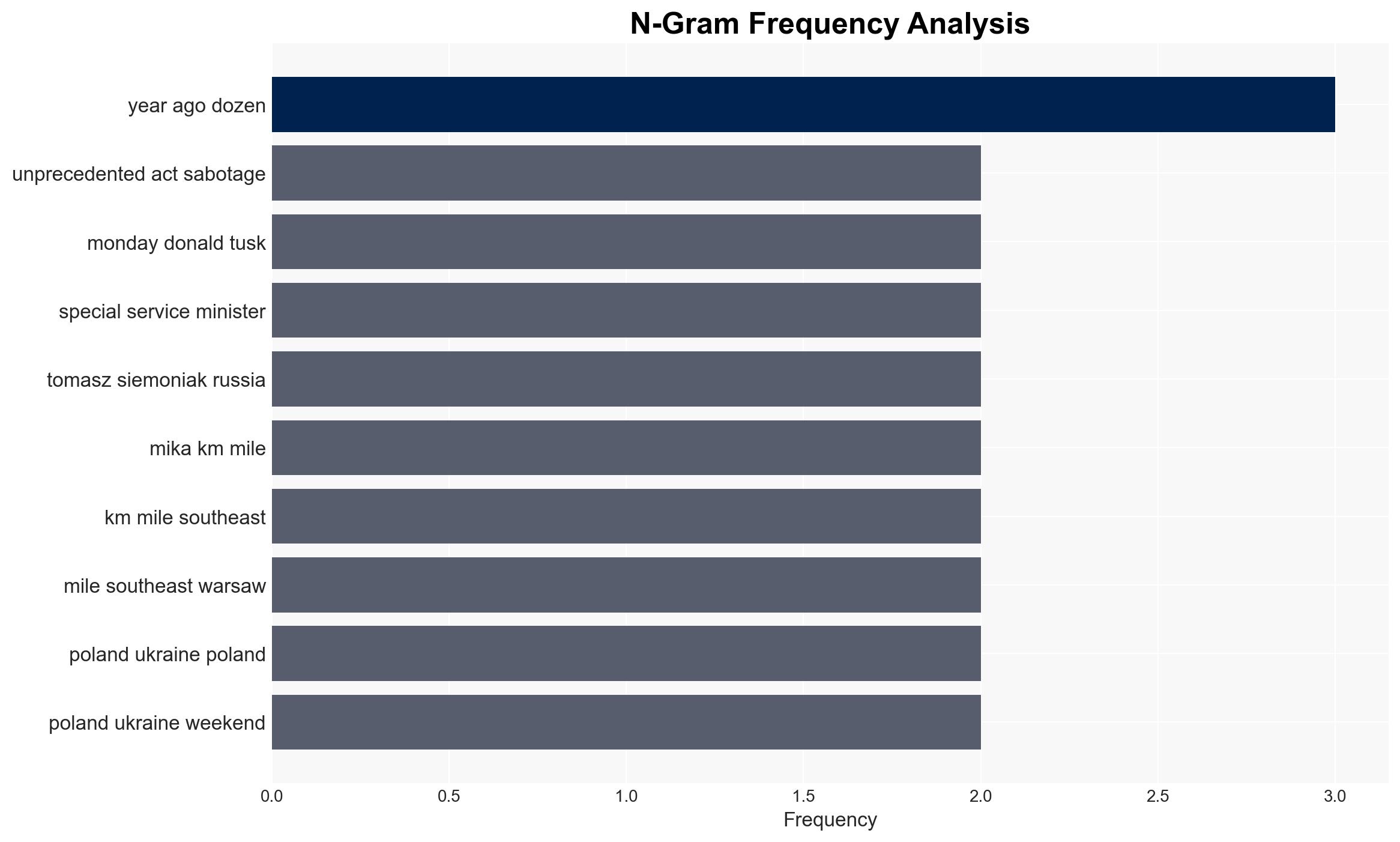Polish PM says railway explosion was ‘unprecedented act of sabotage’ – BBC News
Published on: 2025-11-17
AI-powered OSINT brief from verified open sources. Automated NLP signal extraction with human verification. See our Methodology and Why WorldWideWatchers.
Intelligence Report:
1. BLUF (Bottom Line Up Front)
The explosion on the Polish railway line leading to Ukraine is most likely an act of sabotage orchestrated by Russian interests to disrupt military and civilian logistics. This hypothesis is supported by historical patterns of hybrid warfare and recent incidents in the region. Confidence level: Moderate. Recommended action: Increase security measures on critical infrastructure and enhance intelligence-sharing with NATO allies.
2. Competing Hypotheses
Hypothesis 1: The explosion was an act of sabotage by Russian special services to destabilize Polish infrastructure and disrupt support to Ukraine. This is supported by Poland’s history of arson and sabotage attacks linked to Russian interests, and the strategic importance of the railway line for military supplies.
Hypothesis 2: The explosion was a domestic act of sabotage by non-state actors or disgruntled individuals within Poland. This is less supported due to the lack of evidence pointing to internal dissent with such capabilities and the pattern of similar incidents linked to foreign actors.
3. Key Assumptions and Red Flags
Assumptions include the belief that Russia has the capability and motive to conduct such operations, and that Poland’s infrastructure is a viable target. Red flags include the potential for misattribution and the possibility of false-flag operations designed to implicate Russia. The rapid attribution to Russian actors without conclusive evidence could indicate bias or pressure to respond politically.
4. Implications and Strategic Risks
The incident could escalate tensions between NATO and Russia, potentially leading to increased military readiness and cyber operations. Economically, disruptions in supply lines could affect Ukraine’s defense capabilities. Informationally, the event could be used to sway public opinion and justify further security measures.
5. Recommendations and Outlook
- Enhance surveillance and security on critical infrastructure, particularly those linked to military logistics.
- Strengthen intelligence-sharing frameworks with NATO allies to improve situational awareness and response capabilities.
- Engage in diplomatic channels to address potential escalations with Russia.
- Best-case scenario: The perpetrator is identified and apprehended, preventing further incidents.
- Worst-case scenario: Continued sabotage leads to significant disruptions in military logistics and escalates into broader conflict.
- Most-likely scenario: Increased security measures deter further attacks, but tensions remain high.
6. Key Individuals and Entities
Donald Tusk, Polish Prime Minister; Jacek Dobrzyński, Polish Special Service Spokesman; Tomasz Siemoniak, Polish Special Service Minister.
7. Thematic Tags
Structured Analytic Techniques Applied
- Cognitive Bias Stress Test: Expose and correct potential biases in assessments through red-teaming and structured challenge.
- Bayesian Scenario Modeling: Use probabilistic forecasting for conflict trajectories or escalation likelihood.
- Network Influence Mapping: Map influence relationships to assess actor impact.
Explore more:
National Security Threats Briefs ·
Daily Summary ·
Support us
·





